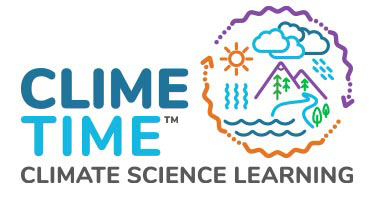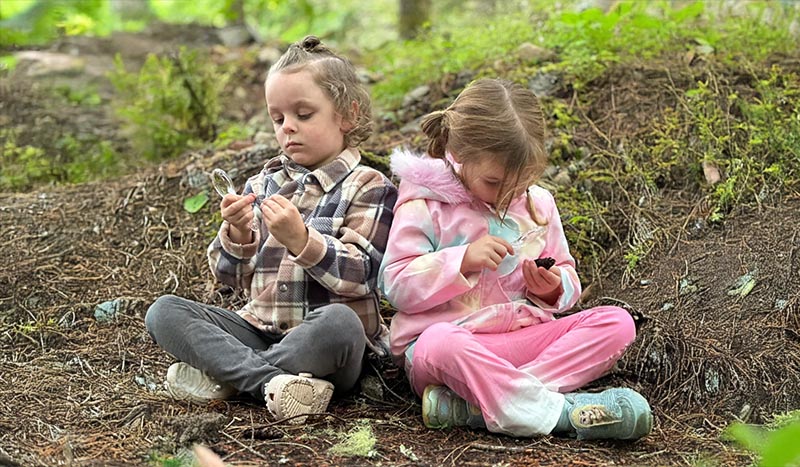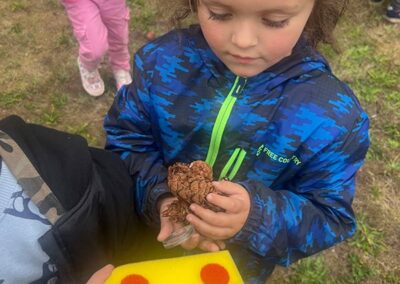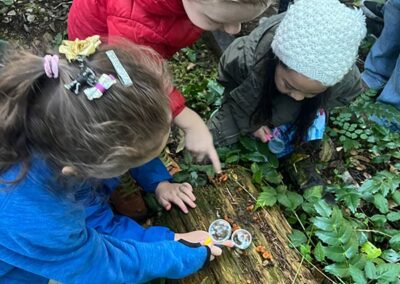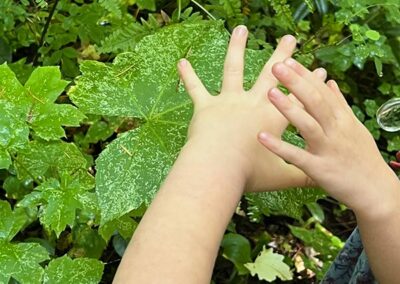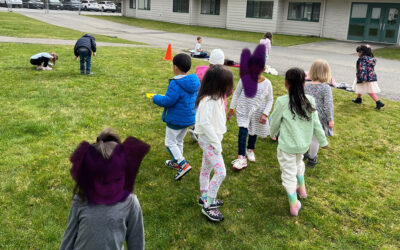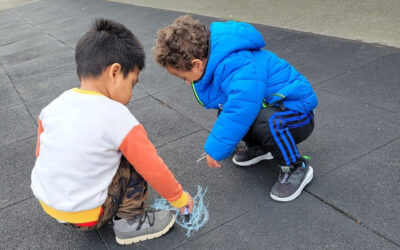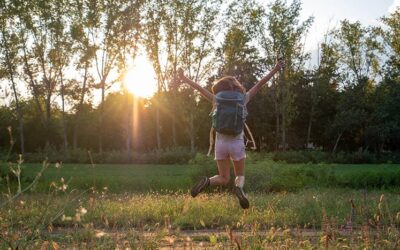What was tried in the classroom?
In our transitional kindergarten classroom, nature-based learning is woven into every aspect of our day. We explore our five senses during nature hikes, encouraging students to engage with the world around them in a hands-on way. For example, we might pause to listen to birds, feel the texture of tree bark, or observe the colors and patterns of leaves. This sensory exploration not only fosters curiosity but also enhances observation and descriptive language skills.
We also use nature as a bridge to literacy and text, creating connections between the natural world and storytelling, reading, and writing. For instance, students might draw inspiration from their outdoor experiences to create stories or connect their observations to characters or events in books we read together. This approach helps students develop both creativity and language skills.
Math skills are developed by incorporating nature into counting, coordination, and measurement activities. Students might collect and count acorns, arrange them by size, or measure the length of sticks. These activities introduce foundational math concepts in a concrete and engaging context.
Lastly, we emphasize social-emotional learning by encouraging teamwork and communication during nature-based projects. Activities like building simple structures from natural materials or collaborating on group observations allow children to practice sharing ideas, problem-solving, and expressing their feelings, fostering a sense of community and connection to both nature and their peers.
How’d it go?
In our transitional kindergarten classroom, students are actively embracing nature-based learning and taking ownership of their day. They are showing a strong sense of community by working together on nature projects and engaging in group activities. Whether it’s deciding on the best spot to explore, taking turns being the “nature guide” during hikes, or sharing their observations and ideas with classmates, these young learners are stepping up as active participants. They are not only curious and eager to explore but also demonstrate cooperation, leadership, and a growing sense of responsibility for both their environment and each other. This collaborative spirit is evident as they work together, share discoveries, and express pride in contributing to the learning experience.
ClimeTime Training
Outdoor class: Beyond Classroom Walls: Cultivating Students’ Sense of Wonder and Respect in the Outdoors
Classroom
School: Columbia Crest
District: Eatonville School District
Teacher: Alisha Kelly
